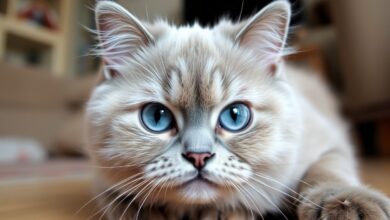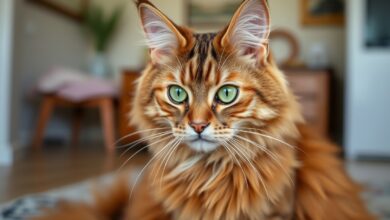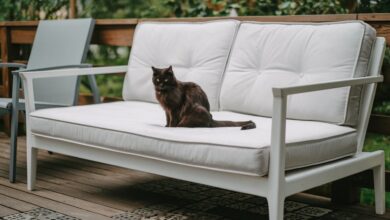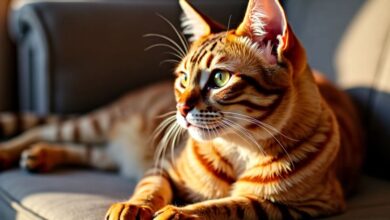The Unique Brown Marbled Bengal Cat – Traits and Care Tips
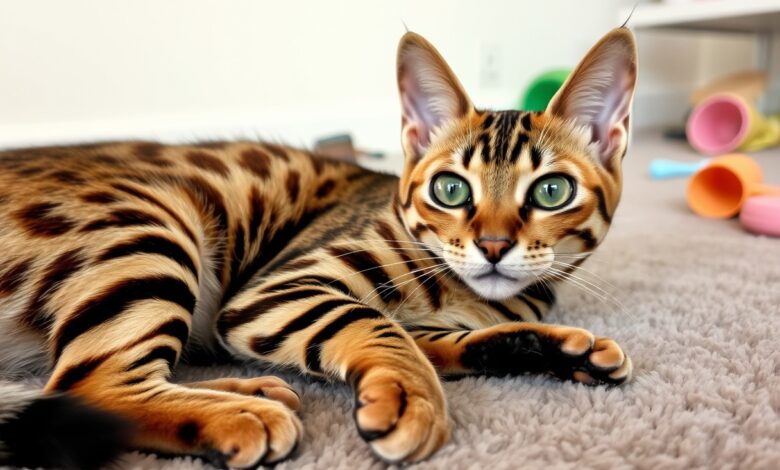
You will find that owning a Brown Marbled Bengal Cat is a rewarding experience, thanks to their stunning appearance and vivacious personality. Known for their striking coat, characterized by dramatic marbling and captivating colors, these cats require specific care and attention to thrive. Understanding their unique temperament and health needs will help you provide a happy, fulfilling life for your feline friend. In this post, you’ll discover vital traits of the Brown Marbled Bengal Cat along with practical care tips to enhance your bond with this extraordinary breed.
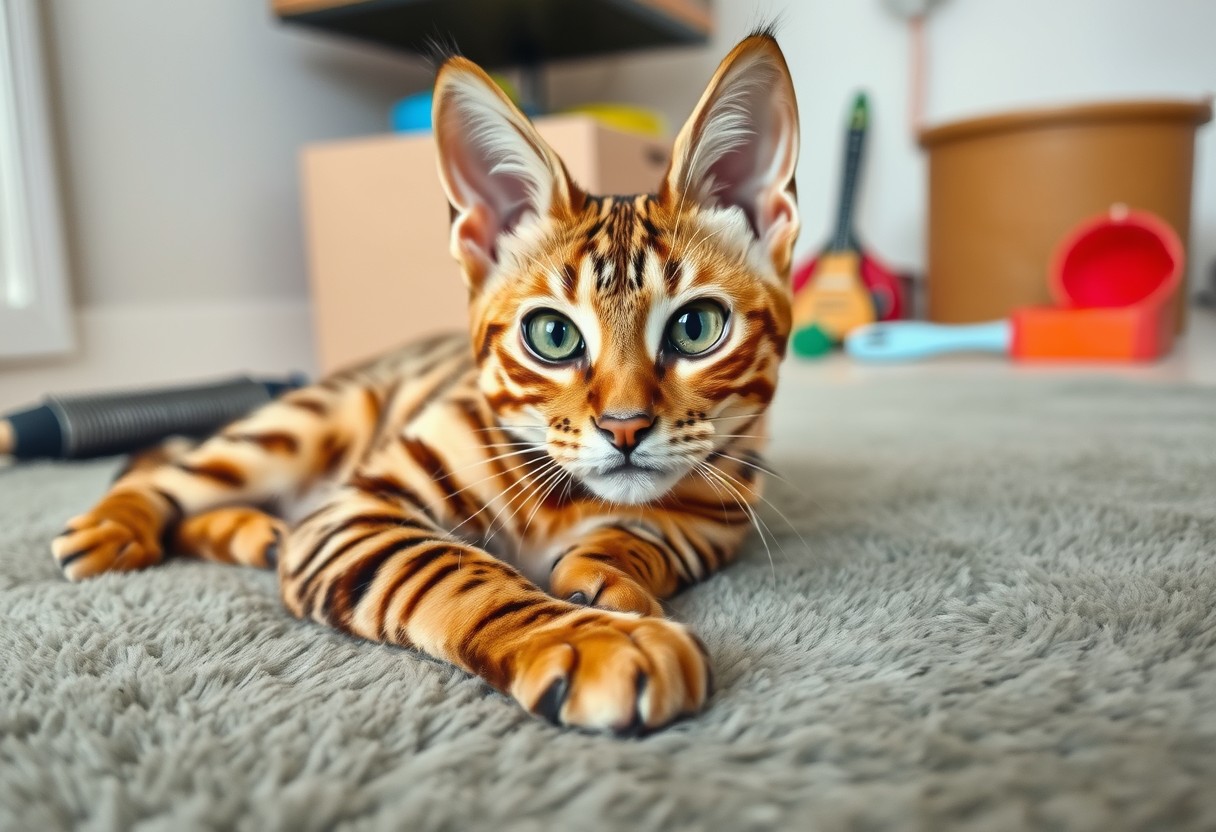
Key Takeaways:
- Distinctive Appearance: The brown marbled Bengal cat features a unique pattern of swirling spots and stripes, making it visually striking and highly sought after.
- Active Lifestyle: Bengals require regular exercise and mental stimulation, so engaging playtime and interactive toys are important for their well-being.
- Grooming Needs: Their short coat is relatively easy to maintain, but regular brushing helps minimize shedding and keeps their fur looking vibrant.
Unique Traits of the Brown Marbled Bengal Cat
While the Brown Marbled Bengal Cat is often admired for its stunning appearance, it’s their unique traits that set them apart from other breeds. The blend of wild ancestry and playful temperament creates a captivating companion for those willing to embrace their energetic lifestyle. Their striking coat pattern not only showcases a beautiful aesthetic but also underscores their exotic lineage, making them a favorite among cat enthusiasts.
Physical Appearance
Traits of the Brown Marbled Bengal Cat are immediately evident in their distinctive brown marbled coat pattern, which echoes their wild ancestry and enhances their athletic build. This captivating coat features swirling, vivid markings that mimic the look of a wild leopard, showcasing nature’s artistry. Their strong, muscular bodies are not only visually captivating but also reflect their active, playful nature, inviting you to engage with these striking felines.
Personality and Temperament
Beside their visual appeal, the Bengal is known for its lively, playful nature. You’ll find they thrive on sociability and intelligence, requiring regular interaction and stimulation to keep them happy. With their curious minds, these cats love engaging toys and games, making them a joy to have around. (A lack of interaction can lead to behavioral issues.)
Appearance aside, it’s their vibrant personality that makes the Bengal breed truly special. They exhibit an endearing mix of affectionate sociability and mischievous playfulness, making them excellent companions for active households. Engaging with your Bengal regularly is important to fulfilling their need for mental and physical stimulation, ensuring a harmonious relationship. (This breed might not be suited for a sedentary lifestyle.)
Health Considerations
Clearly, owning a Brown Marbled Bengal Cat requires attention to its health needs. This breed is particularly susceptible to certain genetic conditions, such as hypertrophic cardiomyopathy (HCM) and other hereditary disorders. Regular veterinary check-ups are vital to detect these issues early on. (Prioritizing your cat’s healthcare can lead to a longer, happier life for your feline companion.)
Common Health Issues
Before bringing home a Brown Marbled Bengal Cat, it’s important to be aware of potential health concerns specific to the breed. Hypertrophic cardiomyopathy (HCM) is a common issue that affects the heart muscles, along with certain genetic disorders that can arise. Regular visits to the vet can help monitor their health and prevent health problems from escalating. (Opt for a veterinarian familiar with Bengal breeds for specialized care.)
Preventative Care
Common preventative care measures are vital for your Brown Marbled Bengal Cat’s health. Vaccinations, a balanced diet, and routine health checks play a vital role in maintaining their overall well-being and longevity. Ensure your cat receives all necessary vaccinations to prevent diseases, and consult with your vet about an appropriate diet plan. (Investing in preventive healthcare is one of the best decisions you can make for your cat’s lifespan and happiness.)
Considerations in preventative care involve understanding not only the health benefits but also the risks associated with neglect. A well-rounded vaccination schedule can prevent serious ailments, while a nutritious diet helps guard against obesity and other metabolic issues. Pay attention to the signs of distress, as early intervention can make a significant difference in your cat’s health. By investing in these measures, you can ensure a healthy and vibrant life for your Brown Marbled Bengal Cat. (Taking proactive steps in their health can minimize potential complications down the line.)

Grooming Needs
Keep your brown marbled Bengal looking its best with regular grooming. This breed has a short, luxurious coat that requires minimal maintenance, but consistent brushing at least once a week will help to remove loose hair and prevent matting. Use a fine-toothed comb or a rubber grooming mitt for an effective yet gentle brushing experience to keep your cat’s unique coat shiny and healthy (investing in quality grooming tools is wise).
Coat Care
On your grooming journey, focus on your Bengal’s coat care. A thorough weekly brushing helps to keep the coat sleek and vibrant by eliminating dead hair and debris. Be sure to pay special attention to sensitive areas, such as behind the ears and under the legs, where tangles may develop. Regular grooming not only maintains their stunning appearance but also provides an opportunity for bonding and health checks.
Nail and Dental Care
Along with coat care, don’t overlook your Bengal’s nail and dental hygiene. Regularly trim your cat’s nails every 2-3 weeks to prevent overgrowth and potential injury. For dental health, incorporate brushing their teeth several times a week with a vet-approved toothpaste to prevent tartar buildup and gum disease.
It’s crucial to maintain proper nail and dental care for your brown marbled Bengal. If you neglect nail trimming, your cat may develop painful paw injuries or damage furniture. Dental issues can lead to severe health complications, including infections that affect vital organs. By establishing a routine that includes both nail trimming and dental care, you’ll promote your Bengal’s overall well-being and longevity, ensuring they remain playful and healthy.
Nutrition and Diet
Now, maintaining a proper diet is important for your Brown Marbled Bengal Cat to thrive. These active felines require a nutrition plan rich in high-quality proteins to support their energetic lifestyle and muscular build. A blend of wet and dry food can provide the balance of hydration and nutrition needed for optimal health (consult your vet for personalized recommendations).
Feeding Requirements
Behind the Bengal breed’s dietary needs is the significant emphasis on protein-rich foods. Your Bengal thrives on a diet consisting of at least 30-40% protein from high-quality sources such as chicken, fish, or turkey. This nutrient density supports their high energy levels and helps maintain a healthy muscle mass.
Treats and Rewards
Among the best ways to bond with your Bengal is through healthy treats during training sessions. Opt for low-calorie options like freeze-dried meat, small pieces of cooked chicken, or commercial treats specifically formulated for cats. These choices allow you to reward your cat without compromising their health.
Considering your Bengal’s playful nature, it’s important to choose treats wisely. Avoid high-carb or sugary snacks that can lead to obesity and health problems. Instead, focus on natural, protein-based treats that align with their dietary needs. This ensures that the rewards reinforce positive behavior while keeping your feline friend fit and healthy.
Socialization and Training
After bringing your unique Brown Marbled Bengal cat home, it’s important to focus on their socialization and training. Bengals are naturally curious and social creatures who thrive on interaction with both humans and other pets. By ensuring your cat has ample opportunities to engage with various environments and people, you can help them grow into a well-adjusted and confident adult cat.
Early Socialization
By prioritizing early socialization, you expose your Bengal to a variety of experiences, sounds, and scents that help shape their behavior. Early exposure to diverse environments and individuals is key to developing a friendly and adaptable cat. This foundation is crucial for preventing any fear-based issues later in life, ensuring that your cat remains balanced and comfortable in different situations.
Effective Training Techniques
Early positive reinforcement training is the most effective approach for high-energy, intelligent breeds like the Bengal. Using treats, praise, and playtime as rewards for good behavior helps reinforce desired actions, making learning a joyful experience. (You should consider incorporating short, fun training sessions into your daily routine for the best results.)
Understanding that Bengal cats respond best to positive reinforcement will enhance your training efforts. Incorporating your cat’s favorite treats and engaging games into the sessions will keep them motivated and focused. Additionally, be patient and consistent during training, as this breed thrives on routine. (The decision to use positive reinforcement over punishment is crucial for building trust and a strong bond with your Bengal.)

Suitable Environment
For your Brown Marbled Bengal cat to thrive, it’s imperative to create a stimulating environment that caters to their playful nature. They enjoy an active lifestyle, making it important to provide plenty of vertical space, such as climbing towers and cat shelves. Your home should also feature interactive toys, scratchers, and cozy resting spots to promote physical activity and mental engagement. The ideal environment will allow your Bengal not only to roam but also to explore and stimulate their natural instincts.
Living Space Requirements
The ideal living conditions for a Bengal cat involve ample room to roam and play. These cats are energetic and curious, requiring a large living space that accommodates their active behavior. A combination of open areas for running and safe spots to climb will keep them happy and healthy. If you live in an apartment, consider providing elevated surfaces and engaging activities to compensate for the limited floor space. A spacious living space will help prevent boredom and encourage your Bengal to explore.
Safe Outdoor Access
Across the debate on outdoor access for your Bengal, it’s imperative to weigh the pros and cons. While allowing your cat to experience the outdoors can be enriching, it poses risks such as traffic, predators, and potential escape. A secure environment, like a catio or an enclosed yard, allows your Bengal to enjoy fresh air and sunlight without the associated dangers of unrestricted outdoor access. (Consider your home environment and your cat’s temperament before making decisions about outdoor access.)
In addition to providing a secure outdoor space, you’ll want to take steps to ensure your Bengal remains safe while enjoying the outside world. Having a catio allows your pet to bask in the sun and watch birds without risking their safety. On the downside, your cat may feel confined if they are used to exploring freely. Therefore, creating a balance between security and freedom is vital for your Bengal’s well-being. (Long-term access to the outdoors should be evaluated based on your cat’s behavior and needs.)
Final Words
To wrap up, the unique brown marbled Bengal cat offers a blend of stunning appearance and engaging personality traits that can enrich your life. By understanding their specific care needs and temperament, you can form a strong bond with your pet. For comprehensive insights, you may want to explore everything to know about a Bengal cat’s personality. By attending to both their physical and emotional requirements, you can ensure a happy and fulfilling life for your feline friend.
Q: What are the distinctive traits of the Unique Brown Marbled Bengal Cat?
A: The Unique Brown Marbled Bengal Cat is renowned for its striking coat that exhibits a beautiful pattern resembling marble. This breed typically has a rich, warm base color of brown adorned with dark spots and rosettes. Their large, almond-shaped eyes come in captivating shades of green or gold, showcasing their wild heritage. In addition to their stunning looks, Bengal cats are known for their athletic build, strong musculature, and playful, social nature. They are highly intelligent and enjoy interactive play, making them excellent companions for active households.
Q: How should I care for my Unique Brown Marbled Bengal Cat?
A: Caring for a Unique Brown Marbled Bengal Cat involves meeting their physical, mental, and emotional needs. Provide a balanced diet that is high in protein to support their energetic lifestyle. Regular grooming is recommended due to their short, dense fur; brushing once a week will help reduce shedding and keep their coat vibrant. Engaging them with stimulating toys and interactive playtime is necessary to harness their curiosity and high energy levels. Make sure to offer a stimulating environment with climbing structures, scratching posts, and puzzle toys to keep their minds active. Regular veterinary check-ups are important to monitor their health and well-being.
Q: Are there any specific health considerations for Unique Brown Marbled Bengal Cats?
A: While the Unique Brown Marbled Bengal Cat is generally healthy, they can be prone to certain genetic health issues, including hypertrophic cardiomyopathy (HCM) and some eye conditions. It’s important to choose a reputable breeder who conducts health screenings and genetic testing on their breeding stock. Regular veterinary visits are vital for early detection and management of any health concerns. Additionally, maintaining a healthy weight through proper diet and exercise can help prevent obesity-related issues, contributing to a longer, healthier life for your Bengal cat.


